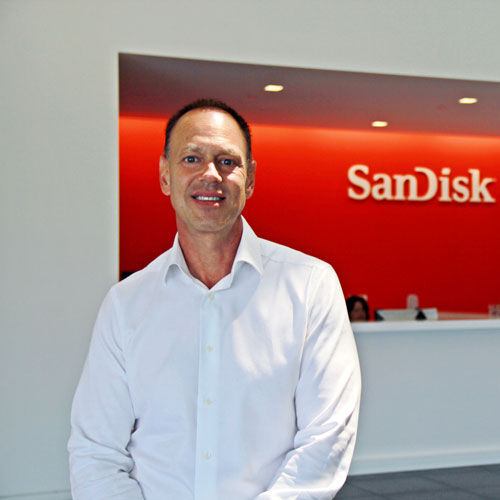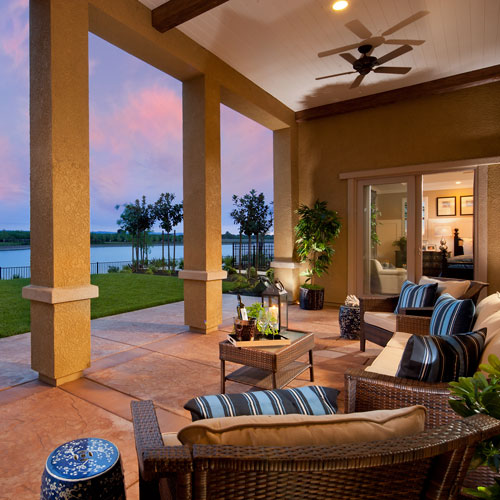
What’s your design style, in 10 words or less?
More color, more warmth, very strong relationship with nature.
Okay, let’s add a few more words.
My style is to create a comfortable and warm environment for people, whether it’s for living or working. I grew up observing a style that was severe, serene, very black and white, steel and glass. I have tried to design buildings that humanize the environment. Sometimes the shape of the building is determined by the shape of the terrain or the water or a group of trees that I don’t want to cut down.
What’s your favorite project?
That’s like choosing your favorite child. [Laughs]
If you were forced to pick?
A number of years ago, when I branched out on my own, I did several major corporate headquarters. McDonald’s is one of them. Those corporate buildings were my favorite buildings because they were designed to create a better working environment. I enjoyed that very much. It also forced me to think independently and creatively, using my own style of architecture, which is somewhat different but still based on the one my grandfather taught me.
You continue to be very involved on the design side.
Yes, I am.
You don’t have to be, though. Why are you?
Because I still enjoy it. [Laughs] I’m still having fun with it. Well, maybe a little less than when I was younger because of today’s stringent budget constraints.
Is there anything clients expect from you now that wasn’t expected of you when you started out?
Clients have always been demanding. I don’t think it’s fundamentally different. They expect good performance and good quality. I aim for long-lasting values and qualities. I don’t want to be a flash in the pan.
What do you mean?
I want to be contemporary. I want to be modern, but I don’t want to be fashion-driven. I’ve lived long enough to know that the latest fashion often goes out of style completely.
So, the McDonald’s headquarters was one of your favorites. Why?
That was a competition. McDonald’s was expanding. The chairman, Fred Turner, was able to get a very nice piece of land, parkland next to a golf course. He loved nature, and he invited a number of architects from around the country to submit designs for the competition.

How did you get involved?
I submitted my design. Then I sort of ended up there one day. I got a call from him, and he said, “Can you come see me?” I said, “When?” And he said, “Now.” It was 45 minutes from my office, so I thought, well, that’s a good sign. So I said, “Sure,” and I drove up. I saw him, and he said, “I’ve met you a number of times, and I know we can work together and make music together. But I don’t like the buildings you designed that you submitted in the competition phase.”
Uh oh.
[Laughs] Well, I said, “I understand that, because it had little to do with your input.” [Laughs] He became a friend of mine. We worked for 15–20 years on this, off and on, with additions here and there. In the beginning—and this was really remarkable—he said, “We don’t need a big contract. Why don’t you just charge me for what you do? But don’t take advantage of McDonald’s.” And I tell you, that handshake meant more than all the other contracts I had.
It sounds like Mr. Turner was very involved in your process.
He challenged me. He wanted to use a lot more wood than I probably would have at that time. He wanted a lot of brick and
a blending with the landscape, the Midwestern prairie.
You also designed the Oceanarium at Shedd Aquarium in Chicago.
That was a fun project. I should’ve mentioned that as one of my favorites.

That project is very unique. How do you prepare for something like that?
We’d never done anything with a zoo or animals before that. Chicago has a great relationship with Lake Michigan. In a way, the lakefront is sacred. To do an expansion to one of the buildings that existed along the lakefront was a challenge—and one I’ve done several times now. The Adler Planetarium is another one.
The Oceanarium doesn’t look like anything anywhere else.
I’ve seen aquariums where people sit surrounding the pool—like a circle in a circus tent, where the animals perform for you. That was not something I liked. I came up with the idea that, since we’re on Lake Michigan, why don’t we create the water surface of the pool in such a way that it visually links with Lake Michigan? You sit on the west side of the pool, you look over the water surface, and it blends in with Lake Michigan. There’s just a glass wall between them.
What did you hope that design would do?
If you have imagination, you can imagine that you’re on the edge of the ocean, looking out over the coastline, and these mammals are swimming and showing you their abilities. I kept all of this below the roofline and dome of the old building, so the silhouette of the aquarium and city wasn’t destroyed in any way.
The idea to build the Oceanarium over the lakefront that way—that came from you, not the client?
I think we made a model. We took it and made presentations to the director and the board. That’s what an architect has to do. He has to be able to persuade the client of his ideas. That’s a huge part of being an architect. Sometimes it works, sometimes it doesn’t work. In this case, everybody loved it.


